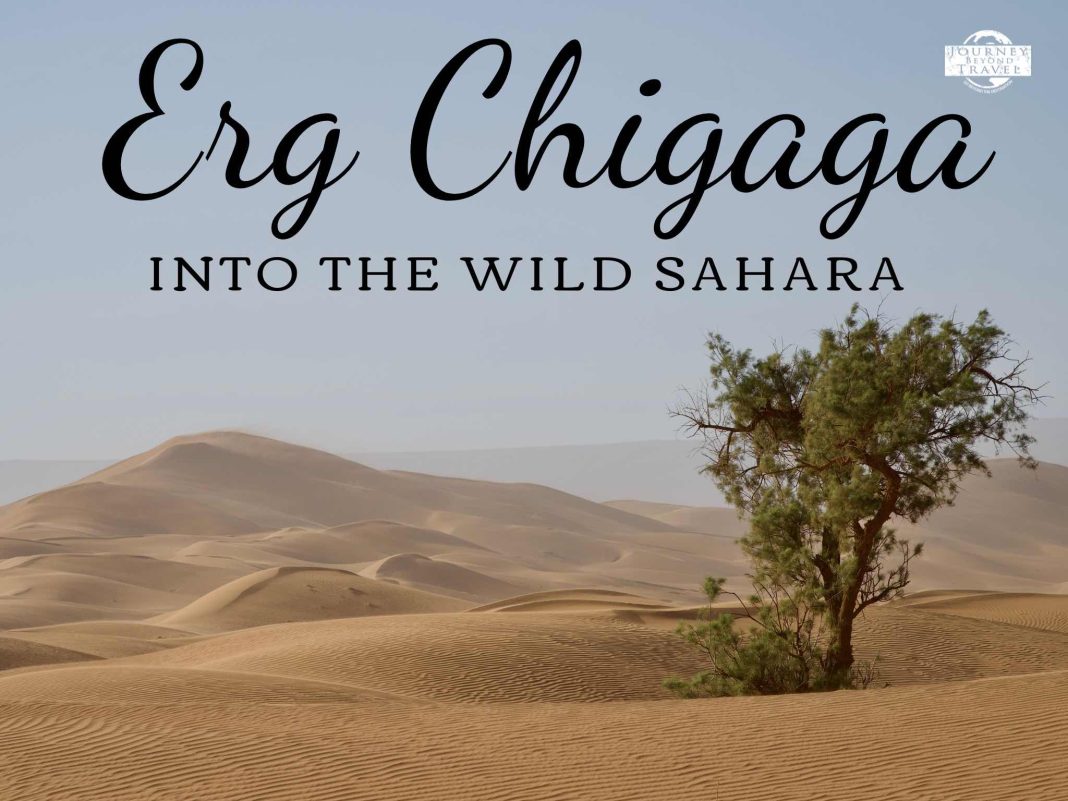I was too ambitious with the day. With Lahsen, my friend and driver, I had hiked to the top of Mount Zagore and back down to Zagora. Afterward I fingered the deep green pottery of Tamegroute and lingered in the mudwalled ksar of Amezrou, breathing in history. It was no surprise it was a swift sunset, as it always seems to be in the Sahara. Quickly the dark folded around us as the 4×4 bounced over the rock strewn path. It was my fault we were trekking through the Sahara to our camp in the dark, headlights violently bouncing with the 4×4. Suddenly, Lahsen slammed the brakes and we skidded to a quick stop. A creature loped toward us. I thought it was a dromedary, common across this part of the Sahara. But I was wrong. The shadow of the creature gave way to two great horns gleaming in the headlights.
“Whaaaaaat?” was all I could muster.
“I can’t believe it!” Lahsen exclaimed.
The creature lazily loping through the headlights was an addax, newly reintroduced to its native land just a few short years ago. These days, there are a few families of addax happily grazing from valley to valley, seeking shade and shelter, their noses pointing them to wherever shoots of green life have found away here, at the edge of Erg Chigaga. I had heard rumors, but this night encounter was a surprise, as was so much else that I uncovered over my two weeks in Erg Chigaga.
As much as I would like to write you a story about that time, I think if you’re reading this, you probably want to know more about what it is like to visit the Sahara, what to do, and what you can expect if you are considering venturing to this part of Morocco, a much lesser-visited, and wild-mannered sibling to the infinitely more popular (and more developed) Erg Chebbi to the North. I’ll break down some of the logistics here for you as well as some of my favorite experiences and activities.
Getting to Erg Chigaga
Depending on if you are coming from the South through Foum Zguid, from the West via Marrakesh, or from the North via Fez, there are different ways to arrive to Erg Chigaga. Over the years, I have worked with different sorts of ways to tackle the Sahara and, in general, I find an overnight in one of the closer small towns before diving in the desert to be great for pacing. There are a few reasons for this:
- If you are making a larger tour and only in the Sahara for a couple of nights, it gives you time to pack a smaller bag so you can leave most of your unnecessary belongings at a nearby hotel (or if you’re traveling with us, you can leave it with your driver).
- For pacing, you arrive to the Sahara fresher and with more energy to do as much as possible if you have a great night of sleep. I find this preferable to rushing into your camp after a long drive from the coast, Marrakesh, or Fez. There’s something to be said for a comfy bed and good shower.
- I often forget things like sunscreen and chapstick. Having just one more clear-headed morning means you’ll have the ability to pick up necessities that you may have neglected or not thought of until you got to the desert clime.
- There are a few different towns I like as an overnight before getting to Erg Chigaga, depending on the direction you’re arriving from.
If you are coming from the South, whether from Guelmim or Agadir, it makes a lot of travel sense to stop in Foum Zguide.
From the West (Marrakesh), you’ll cross the Tizi n’Tichka pass, which is tiring for a lot of travelers. Agdz and Zagora are both great stops.
From the North (Fez), you’ll come down via the Todra Gorge or Erfoud, which means you still have to cross the Anti-Atlas. It’s best to rest in either Todra or Tinejdad, Erfoud, or even Merzouga. From Erfoud, it’s an easy 3.5 hour drive to Zagora, where you can stop for lunch, before diving out into the Sahara.
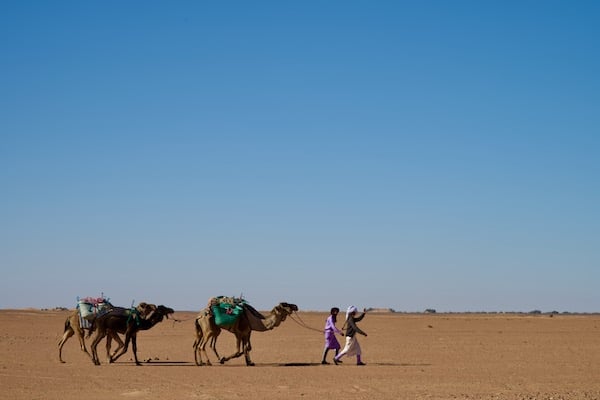
What is there to do in Erg Chigaga?
Because it is remote and part of a protected natural reserve, the Lake Iriqi National Park, Erg Chigaga retains a wildness that is all-but disappeared from Erg Chebbi. Where Erg Chebbi has over 200 registered camps, Erg Chigaga has a tenth of that with just over 20 camps dotting a much, much larger area. It is still possible to get to the top of a large dune, see as far as the eye can see, and not see a soul.
If you are seeking that existential infinite that the Sahara promises, in Morocco, Erg Chigaga is where to find it.
There are quite a few experiences to consider, so many of them incredibly picturesque in the way that only the Sahara is (here is a really neat collection of images: https://www.journeybeyondtravel.com/blog/scenes-sahara-desert-morocco.html.
This isn’t a holistic list of things you can do in Erg Chigaga, but a few of my favorites:
- Walk the Salt Road — The famed 52 day caravan running from Zagora to Timbuktu wound through the ever-shifting sands of Erg Chigaga. You can still walk part of this historic salt route, literally following the footsteps of nomads and traders of old. Along the way, while you ponder the gold, salt, and slave trade that made this route across the Sahara so valuable, you can learn about the flora and fauna of this very-much alive Sahara.
- Oasis Picnic — Romantic in the very classical sense, this is one way to feel at home in the desert, particularly if you have the opportunity to help make some of the local cuisine, like sand bread or abadir, a type of stuffed dough baked in the hot sand.
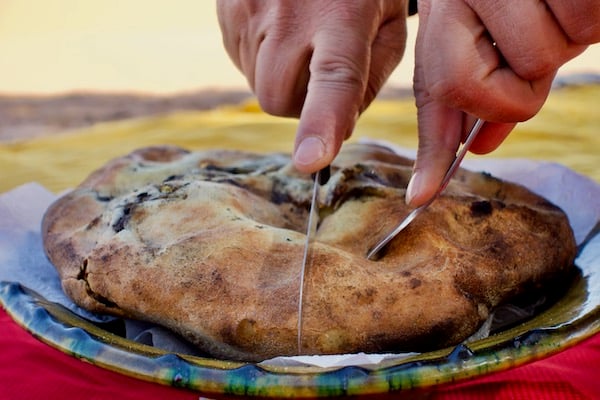
- Stargazing — This should not be underrated, particular if you are coming in from a metropolitan area. When you are a blessed with a clear night and billions of twinkling stars, the vast Milky Way shooting through it all, it is truly awesome.
- Visiting the Nomads — With the help of a translator, you can have a really wonderful experience getting to know some of the people still choosing to live their nomadic way of life. As one goatherder put it to me: “ You think I don’t know Tangier? I know Tangier. What? You have a house? I have this.” He points out to the never ending dunes and swings his arm around behind us to the far mountain range. “All of this is my home.”
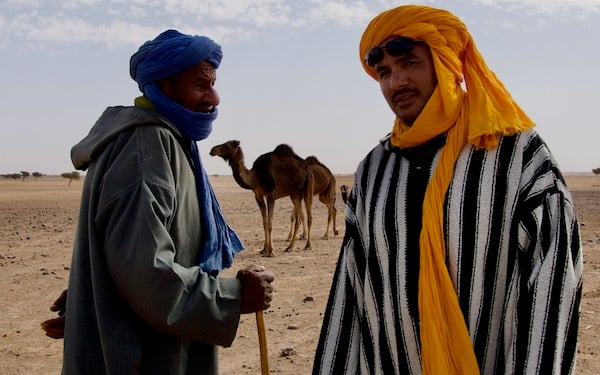
- Lake Iriqi — The vast, dried out lakebed of Iriqi provides a dramatic place for photos, but also serves as a stark reminder of just how precious of a resource our water is. This lake was once a vast oasis for migratory birds and the largest watering hole for hundreds of kilometers.
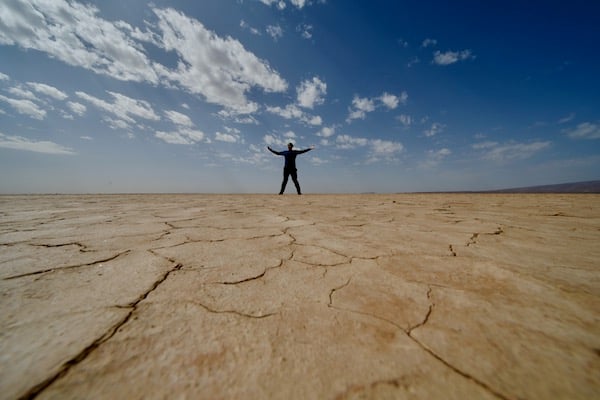
- Wildlife — It isn’t a exactly a safari, but trekking the addax and gazelle was a true pleasure. To see the gazelles darting through the scrub brush and the addax nibbling a light breakfast made for an experience that really isn’t possible in other parts of the country. There are also a surprising amount of birds, from owls to the desert sparrow. Though you will not likely see them, you will also come across treks of some animals, like the fennec fox, who typically hide from we loud humans.
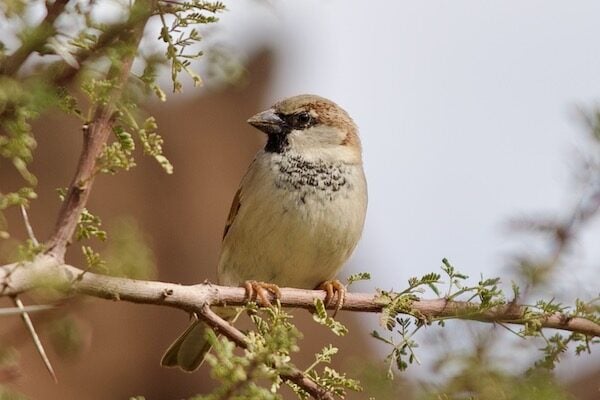
What are the desert camps like in Erg Chigaga?
Though lacking in some of the posh of the camps found in Erg Chebbi, there is a lot of comfort to be found in the camps I’ve tried in Erg Chigaga. Some of them are styled more like safari camps you might expect to find in Kenya while others have copied what’s popular in other places in Morocco. One of my favorites is more like a mudbrick nomadic dwelling. Though they are darker interiors, they give more of a true sense of living in the Sahara than other options.
In all of the camps you can expect to have functioning bathrooms with running, water, though definitely a bit more rustic than most of the camps found in Erg Chebbi.
For the adventurous and those really seeking the serenity of a deep Sahara experience, I recommend staying at least one night in a mobile camp. Depending on the weather, these can be placed in the shelter of a distant oasis or deep in the dunes of Erg Chigaga. There is perhaps no better way in the world to disconnect.

What is the best time to visit?
The best time to visit Erg Chigaga is between October and April when temperatures are mild and comfortable. During the summer months (June, July, and August), temps can clear 50 degrees celsius (over 120f) and nearly all camps and facilities in the region are closed. Here is a more specific breakdown:
September: Things are just starting to open up with most camps and services typically throwing open their tent flaps around mid-month. It can still be quite hot with temperatures sometimes hitting the 40s (90s-100f), depending on weather cycles.
October: The land has cooled, though will still be warm during the day with temperatures typically in the low 30s (80s Fahrenheit).
November: This is maybe the ideal month to visit in many ways in terms of temperature.
December: Much like November, though through the European winter holidays, much of the country is overly packed with travelers from France, Spain, Germany, and elsewhere.
January: The start of the rainy season. Showers possible, though not highly likely.
February: Perhaps the coldest, wettest month. Rain and even snow are possible. A good year will see a few days of rain over the course of this month.
March: Much like February, though starting to get a touch warm with temperatures hitting the high 20s and 30s (80s in Fahrenheit) toward the end of the month.
April: Beginning to really get “desert warm” with daily highs peaking into the low 40s (90s) sometimes. This is the month most known for being windy.
May: A bit like September. A decent shoulder season if you are okay with the heat.

Last words on Erg Chigaga
Of all of the spectacular corners of Morocco, the Sahara just rings with me in a way no other spot in the country does. It spark curiosity and wonder, joy and amazement at seemingly every turn. I have spent probably close to six months of my life in the Sahara over the years. I’ve explored different routes and different seasons and even took our son when he was three years-old into the Sahara in the depths of summer… big mistake! I have explored the dunes and desert, the palm groves and kasbahs, the ksars and villages, and all of it, every time, without fail, just leaves me wanting more.
“My road leads into the desert,” Paul Atreides says in Dune, speaking aloud the path we all know is coming for him, the path we know he needs to take.
Sometimes I do feel like Paul. Perhaps because, like his creator, Frank Herbert (the author of Dune), I hail from the Pacific Northwest and also grew up surrounded by evergreens spiking into the sky. The vast wild of the Sahara is a different sort of vast wild than the Cascade Mountains and Hoh Rainforest I grew up exploring. It is at once uncomfortable and divine.
The question for Morocco is, of course, Erg Chebbi or Erg Chigaga? In truth, it depends on your travel style… but I think you know where my allegiances lie.
Enough of my babbling. Get out to the Sahara and experience it for yourself!
Journey On!
About the Author
 Text and photos by award-winning writer, photographer, and Morocco expert, Lucas Peters. After spending years traveling to the distant corners of Morocco and writing about his adventures, he penned the best-selling guidebook Moon Morocco as well as Marrakesh and Beyond. He lives in Tangier with his family and dreams of sand worms.
Text and photos by award-winning writer, photographer, and Morocco expert, Lucas Peters. After spending years traveling to the distant corners of Morocco and writing about his adventures, he penned the best-selling guidebook Moon Morocco as well as Marrakesh and Beyond. He lives in Tangier with his family and dreams of sand worms.

